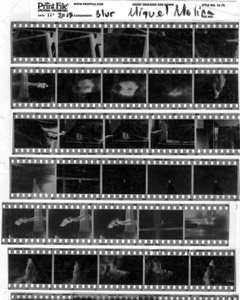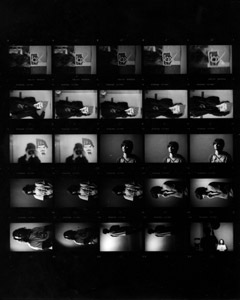...the negative is like the composer’s score.
Then, using that musical analogy,
the print is the performance.
~Ansel Adams, May 1st 1983
http://davidsheff.com/article/ansel-adams/
- Exposure
- The Total amount of light which comes in contact
with a photosensitive surface, combining the intensity
of light with duration.

This is a clear plastic sheet used for holding and protecting photo negatives which includes punched out holes for easy storage in a three ring binder. Once the negatives have been placed within the clear pockets in each sheet, the negatives can then be transferred to a dark room to be made into a proof sheet which can be used to preview the roll of film before further printing.

Before a proof sheet, or a final print is made, a test must be made in order to determine the proper exposure for the print (Exposure as mentioned above: "The Total amount of light which comes in contact with a photosensitive surface, combining the intensity of light with duration".) This test is made by exposing small portions, of a strip of photo-paper, in increasing lengths of time, to light passing through a negative in a photo enlarger. By covering part of the strip with something opaque enough to protect the strip from light, only a portion of the strip is exposed. Once the portion is exposed, the item being used to cover part of the negative is moved over in a way which reveals more of the strip. Without moving the strip itself, and the strip is then exposed to light again. This process is repeated until the strip is fully revealed. Once developed the strip can be used to calculate a perfect exposure time for either a print of a proof sheet, or a print of a specific photo.

Here we have a Proof Sheet, or a Contact Proof, which is made in a darkroom by physically placing a negative sheet over a price of unexposed photo-paper (once a proper exposure has been determined by use of a test strip) and exposing the paper with an enlarger. Then the sheet can be developed and can be viewed with the naked eye, magnified glass, or a loupe, in order to determine which images will be printed, and how the prints might look.
Return to Homepage